

Damion Smy
Boxy new KGM Musso unveiled to take on HiLux and Ranger ahead of Australian launch
12 Hours Ago
Planning on using any cycle mount option, you should be aware that there are strict rules about the ways that you can and should mount in on your vehicle.

Senior Contributor
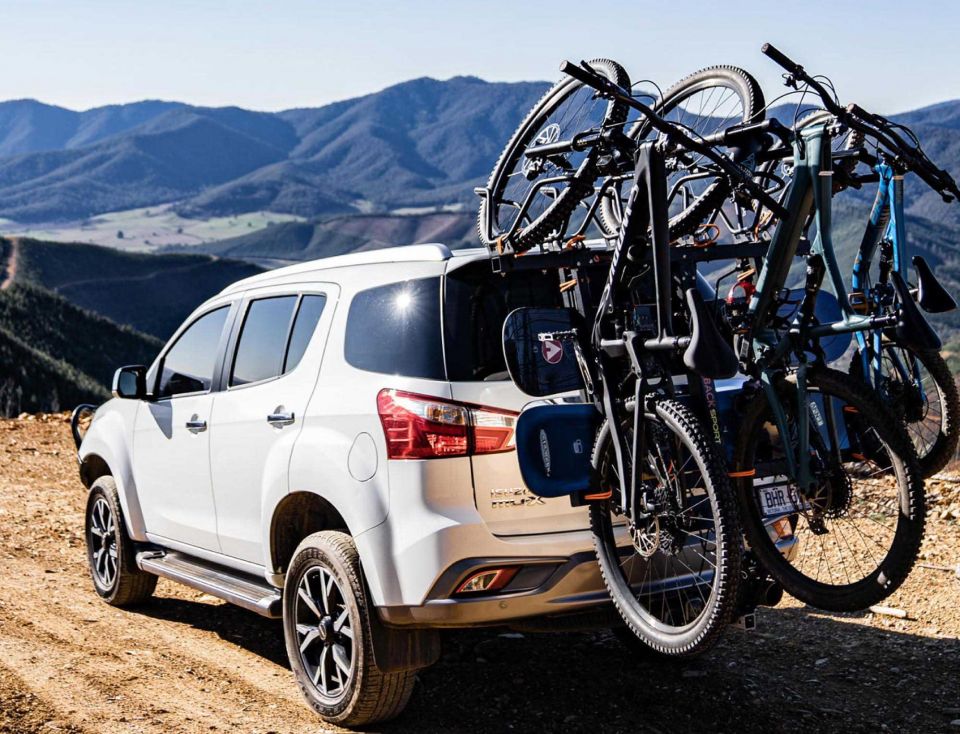

Senior Contributor
If you want to go for a bike ride but the destination is too far away to ride to, you’d clearly think about driving there with your bicycle. Lots of people do it.
But if you don’t have a vehicle like a ute, van or large station wagon that allows you to simply put your bikes in the back, you might need to make use of a bike carrier.
There are different types of carriers available – including boot/trunk mounted, roof mounted, spare tyre mounted, towing receiver hitch mounted, and indoor mounted.
If you plan to use any of these cycle mount options, you should be aware that there are strict rules about the ways that you can and should mount bicycles to your vehicle, which are designed to keep the driver of the car with the rack fitted, as well as other road users around them, safe.
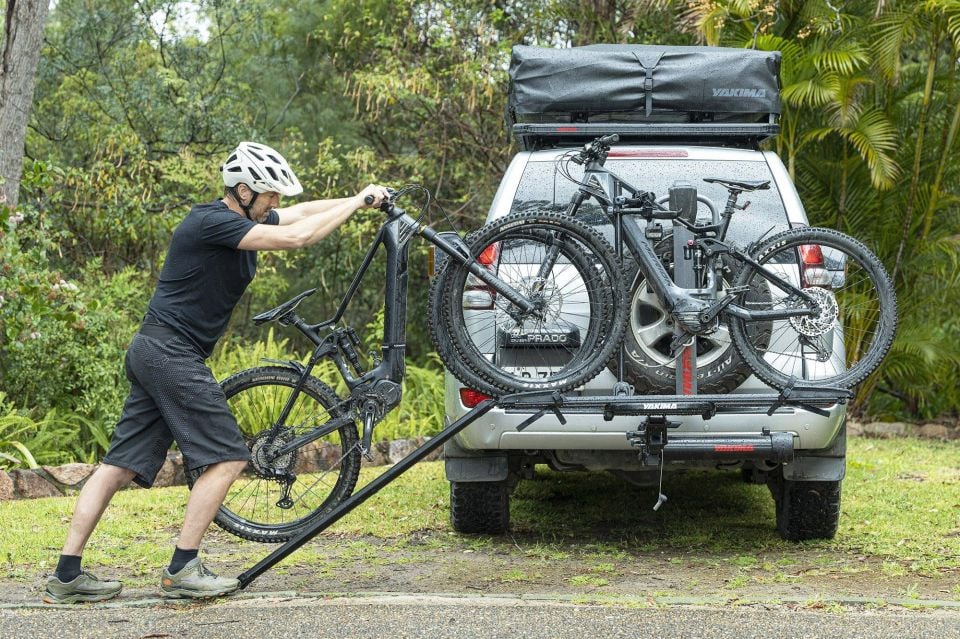
At the time of publishing there are reports that some of the newer types of racks and mounts are not within the scope of the existing laws and regulations, so a new national legislation is on the cards, backed by Bicycle Industries Australia. The aim is to have a national standard, rather than state-by-state road rules and laws that govern how people transport bicycles attached to their vehicles.
That would make things a lot easier when shopping for a new rack that must meet the national standards – currently, though, there are plenty of options that are available to buy online that might not be the safest or most recommendable option for legality’s sake.
With that in mind, here’s a rundown of the current state and territory regulations for bike racks, most of which pertain to the rear-mounted types of carriers or racks.
Most commonly, you need to ensure the rack is secured correctly to the vehicle (and, if mounted on a roof rack system or roof bars, that those are secured, too), and that any bicycle attached to the rack is secured, too. And if you’re using a rear-mounted rack system, never fit more bicycles than the system is designed to handle.
And beyond that, there’s the Australian Design Rules, which apply to both vehicles and attachments fitted. Specifically, Australian Design Rule 43/04 – Vehicle Configuration and Dimensions, posits that the total rear overhang of the vehicle, when measured from the vehicle’s rear axle centre, cannot exceed the lesser of 60 percent of the vehicle’s wheelbase, or 3.7m.
Many jurisdictions offer similar restrictions and state their specific interpretation in different ways, and it is best to refer to your local authority to clarify the exact requirements.
NSW: You can be fined and risk penalties if your bike rack or any bike fitted to it obscures the number plate, or the rear lights. That’s where an auxiliary number plate and/or additional lights come in. Police may also get you in strife if any bike or the rack protrudes at the sides of the vehicle, or if the bike isn’t secured correctly.
For rear-mounted carriers in NSW, the bicycles and carrier must not stick out more than 150mm at the sides. If the number plate isn’t visible with the rack fitted, an official auxiliary plate should be used (fines for hand-drawn alternatives may apply), and it shouldn’t be fitted more than 1300mm above the ground. It needs a light on it if you’re driving at night, too.
Vehicle Standards Information No.10 states that if you plan to rear-mount a rack, it must not extend more than 1200mm from the rear of the car, and it cannot extend backward from the rear wheel area to a greater degree than 60 per cent of the wheelbase of the vehicle. Confused? Yep, it’s complex. Hopefully this diagram helps:
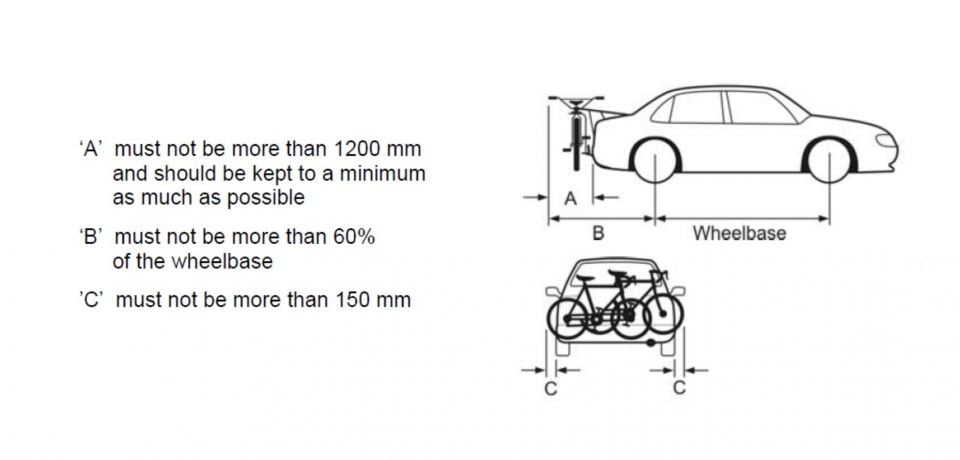
Victoria: This is another state with a long list of stipulations when it comes to bike rack fitment, which has been labelled the most “extreme” set of rules by avid cyclists.
Vehicle Standards Information 34 for Victoria states that the “maximum dimensions for any vehicle, including its load, are 2.5m in width and 4.3m in height”, and that “a vehicle fitted with a bicycle carrier, along with any bicycles must not exceed these limits”.
Further, there are specific rules for rear-mounted bicycle carriers: “Any rear overhang on a vehicle must not exceed 60 percent of the wheelbase or 3.7m, whichever is less.”
Though the standards also state: “If possible, any bicycles on rear-mounted bicycle carriers should not project more than 1.2m beyond the rear of the vehicle. If due to the design or construction of the bicycle carrier, it is not possible to stay within 1.2m, a warning signal must be carried on the outermost part of the bicycle.” If you’re wondering, a warning signal is described as: “during the day, a brightly coloured flag or piece of material, with each side at least 300mm long, and if driving at night, a red light that can be seen for at least 200m”.
Drivers must ensure that the vehicle’s rear lighting is not obscured by a bike carrier, and that lighting can be seen from 200m at night, and indicators can be seen from 30m.
There’s a similar rule around side protrusions to NSW, with drivers required to ensure that any items or racking must not “project more than 150mm from the outermost part of either side of the vehicle”.
And if you’re thinking, ‘those aren’t that strict’, then have a crack at the numberplate situation: The rear number plate on a vehicle must be clearly visible from a distance of 20m from the number plate at any point within a 90 degree horizontal arc and a vertical arc of 45 degrees as shown in the diagram below:
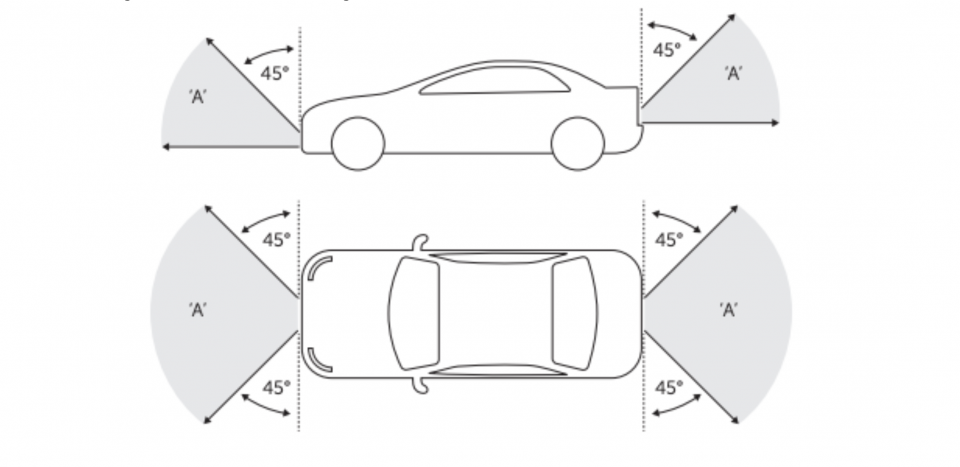
Tasmania: Similar rules around bike carriers and racks in Tassie to those in place in Victoria, and the island state’s Information Bulletin around bicycle rack use from 2018 makes it clear that the rules are guided by The Vehicle and Traffic (Vehicle Operations) Regulations 2014 laws, which prohibit the use of a vehicle with a load that projects in a way that is dangerous to a person or property.
Queensland: A lot of the information cited in the QLD Government guidelines for transporting bicycles cites the data and illustrations used in the abovementioned VSI No.10 for NSW, with the stipulation that “penalties may apply if the safety requirements and dimensional limits are not followed”.
Similar to NSW, there are guidelines around the projection of rear carriers, and that they should not extend “more than 1.2m beyond the rear of the vehicle”, but if they do, “a brightly coloured red and yellow, or yellow flag at least 450mm by 450mm fixed to the extreme back of the load”, and at night “either a red warning light that is visible from at least 200m away or at least 2 red reflectors capable of reflecting from the headlights of a following vehicle” must be included.
Queensland has a great and simple illustration for the use of an accessory plate and light bar to ensure that the requirements are met by rear-mounted rack users.
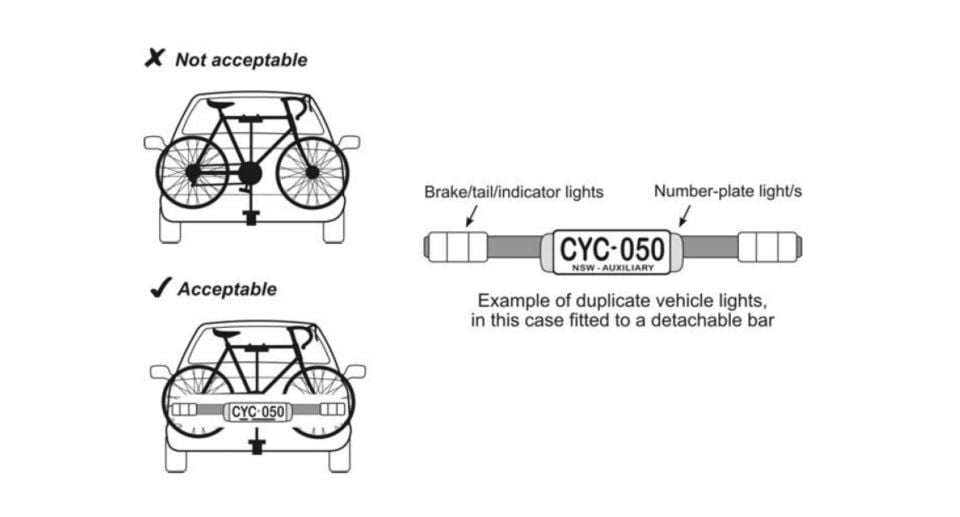
Number plates have to be clearly visible from 20m “within any point 45 degrees to the left, right or above the number plate”. As per the above illustration.
Incorrect rack use could result in a $495 fine if the car’s number plate is obscured.
Western Australia: The WA government makes it clear that “you need to buy and attach an additional plate if a bike rack or mobility device blocks the view of your rear number plate”. Beyond that, there’s not much that we could find on the specifics of the state’s rules on racks and carriers.
South Australia: The RAA states that a vehicle;s number plate must be visible at all times, and if the rack or any part of it, or any part of the bike/s obscures the number plate, a driver could be fined $507 (+$90 Victims of Crime Levy). That’s why the state pushes its supplementary plate option, as do most other localities.
Don’t go thinking you can get the kids to draw up ‘stop-gap’ accessory plate, either. There are fines up to $800 if you use a non-sanctioned accessory plate.
Rear lights must be visible from 200m in normal weather. If your rear lights are obscured by the rack or bike/s, additional light units will be needed.
Further, the width protrusion standard – 150mm beyond the sides of the vehicle – is in play in SA, too.
ACT: The nation’s capital is known for its cycle-friendly nature and pathways that lead all over the city, but if you want to fit your bike to a rack or carrier on your car, you need to ensure that it complies with the territory’s regulations on numberplate visibility. According to Access Canberra: “If there is a bike rack on the rear of the motor vehicle and the number plate does not meet the number plate visibility requirements you must order a bike rack number plate that you affix to the bike rack. If you have multiple vehicles that carry the bike rack you will need to order a bike rack plate for each vehicle. Bike racks should only be attached to a vehicle when the rack is being used for the purpose of transporting bikes.”
Northern Territory: Up north, there are specific rules around bike racks and any accessories fitted to a vehicle, according to the Territory government’s transport pages.
The onus is on drivers to:
When it comes to rear-mounted carriers and racks, the NT requires that the carrier/rack and its load do not: project excessively behind the rear of the vehicle; exceed rear overhang limits – 60 percent of the vehicle’s wheelbase; protrude more than 150mm from the width of either side of the vehicle.
Not intended as legal advice. Check with the relevant roads authority in your state or territory.
Matt has more than a decade of experience in automotive journalism, and loves exploring the pros and cons of new cars, delving into deep-dive industry stories, and going for a drive just for the fun of it.


Damion Smy
12 Hours Ago


Damion Smy
13 Hours Ago


Damion Smy
15 Hours Ago


Damion Smy
16 Hours Ago


Damion Smy
18 Hours Ago


Damion Smy
19 Hours Ago